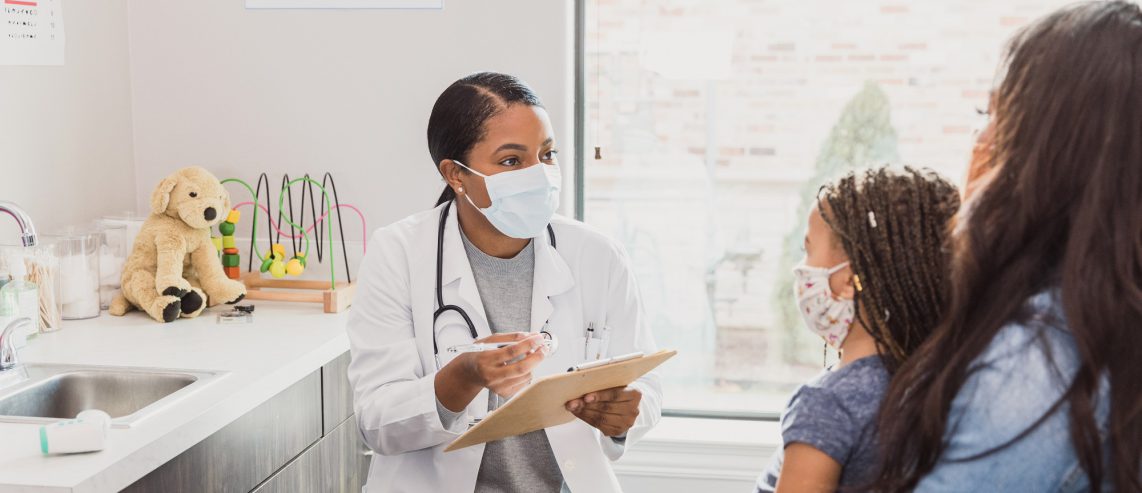It all happens so suddenly. Out of nowhere, your child is thirsty, fatigued, and losing weight. It may be that your child has developed type 1 diabetes.
Learn the symptoms of type 1 diabetes in children so you know when to seek medical help.
What Is Type 1 Diabetes?
Type 1 diabetes is an autoimmune disorder. The immune system unexpectedly attacks special cells in the pancreas called islet cells. These are the cells responsible for producing insulin.
Insulin plays an important role in our health and well-being. This hormone allows us to get the energy we need from the food we eat. It allows our cells to get the glucose, or blood sugar, they need to function properly.
Doctors used to call type 1 diabetes “juvenile” diabetes because it usually started during childhood. Doctors now understand that type 1 diabetes can occur in people of any age.
According to the American Diabetes Association, nearly 1.9 million Americans have type 1 diabetes. That number includes approximately 244,000 children and adolescents.
Researchers don’t fully understand what causes type 1 diabetes. There’s some evidence that there’s a genetic component. But unlike type 2 diabetes, the underlying cause does not seem to be lifestyle factors like diet or exercise.
Type 1 diabetes can develop even in very young children. That’s why it’s so important to recognize the symptoms as early as possible.
Never Miss a Beat!
Subscribe to Our HealthBeat Newsletter!
Thank you for subscribing!
You can now select the specific newsletters you'd like to receive.
You are already subscribed.
Subscribe to more newsletters in our email preference center.
Sorry, an error occurred. Please try again later.
Get Healthy Tips Sent to Your Phone!
Common Symptoms of Type 1 Diabetes in Children
The symptoms of Type 1 diabetes are similar no matter your age. But it may be harder to recognize these symptoms in infants or young children. After all, they may not be able to tell you how they are feeling.
Some of the most common symptoms of type 1 diabetes in children include:
- Sudden or unexpected weight loss.
- Increased appetite.
- Fatigue or lack of energy.
- Itchy or dry skin.
- Ongoing intense thirst.
- Frequent and increased urination.
- Dry mouth.
- Yeast infections.
- Fruity-smelling breath.
- Heavy or difficulty breathing.
- Changes in vision.
- Odd behavior, almost like acting drunk.
Increased thirst is often the first noticeable symptoms. Parents can see the increase in wet diapers or trips to the bathroom. Fatigue and weight loss are fairly noticeable as well.
It’s important to pay attention to patterns with these symptoms as well. For example, even when they drink more fluids, children with type 1 diabetes will still have a dry mouth and itchy skin. That’s because their bodies can’t retain fluid when cells don’t have enough insulin.
Similarly, children may be eating a lot more but are still losing weight. That’s because their bodies can’t get energy from the food they eat without insulin.
If your child is experiencing any of these symptoms, it’s time to make an appointment with your child’s doctor. They can test your child for diabetes — and can determine whether it is type 1 diabetes.
How Do Doctors Test for Type 1 Diabetes in Children?
If your child’s doctor suspects diabetes, they’ll start by giving your child a urine test to check for glucose in the urine. They’ll also take a drop of blood from their finger to measure the amount of glucose in the blood.
Initial diabetes screening tests
If the urine test is positive for glucose or the blood test shows a high level of glucose, your child likely has diabetes. The doctor will then run further tests to confirm the diagnosis — and to determine if it’s type 1 or type 2 diabetes.
Follow-up diagnostic tests for diabetes
Those other tests may include a fasting blood sugar test. That involves a blood draw after an overnight fast. A blood glucose level of 126 mg/dL or higher after fasting for at least 12 hours indicates diabetes.
Your doctor will also order an HbA1C test, which requires either a finger stick or a blood draw. This test measures your child’s average blood glucose levels over the past two to three months. If your child has a result of 6.5% or higher, it also suggests diabetes.
Your child’s doctor may also want to test them for autoantibodies. These are specific molecules that show the immune system is attacking islet cells in the pancreas. This test does require a blood draw.
If your child tests positive for these autoantibodies, they will likely receive a diagnosis of type 1 diabetes. If they test negative for autoantibodies but otherwise test positive for diabetes, they will likely receive a diagnosis of type 2 diabetes.
Both type 1 and type 2 diabetes can look very similar in children. That’s why your doctor may repeat one or more of these tests over time to look for patterns to help them determine the right diagnosis.
What If My Child Receives a Type 1 Diabetes Diagnosis?
First and foremost, don’t panic! While type 1 diabetes, especially in young children, is a scary diagnosis, it is a manageable one. With insulin therapy and other treatments, children with type 1 diabetes can lead active, healthy lives.
There are many tools available to help you and your child better manage the condition. For example, your child can use a continuous glucose monitor (CGM) to make it easier to monitor blood sugars, even while on the go.
There are also insulin pumps — a different way of providing the insulin that is needed. Your endocrinologist will work with you to determine if they are a good fit for your child.
Your child can also benefit from healthy lifestyle changes. Adding more fruits and veggies to your diet (and reducing sugary snacks) can make it easier to manage blood sugars. Regular physical activity helps, too.
While type 1 diabetes may seem overwhelming at times, you won’t be alone. Your child’s physician and health care team are always available to answer questions, make recommendations, and help you find your way forward.
Editor's Note: This article was originally published on , and was last reviewed on .
Sources
JDRFADA
About Pediatrics
From nutrition to illnesses, from athletics to school, children will face many challenges growing up. Parents often will make important health care decisions for them. We hope to help guide both of you in that journey. UPMC Children’s Hospital of Pittsburgh is a national leader in pediatric care, ranking consistently on U.S. News & World Report’s Best Children’s Hospitals Honor Roll. We provide expert treatment for pediatric diseases, along well-child visits, urgent care, and more. With locations across Pennsylvania, Maryland, and West Virginia, you can find world-class care close to home. We also work closely with UPMC Magee-Womens Hospital, a national leader in care for newborns and their mothers. Our goal is to provide the best care for your children, from birth to adulthood and beyond. Visit our website to find a doctor near you.

